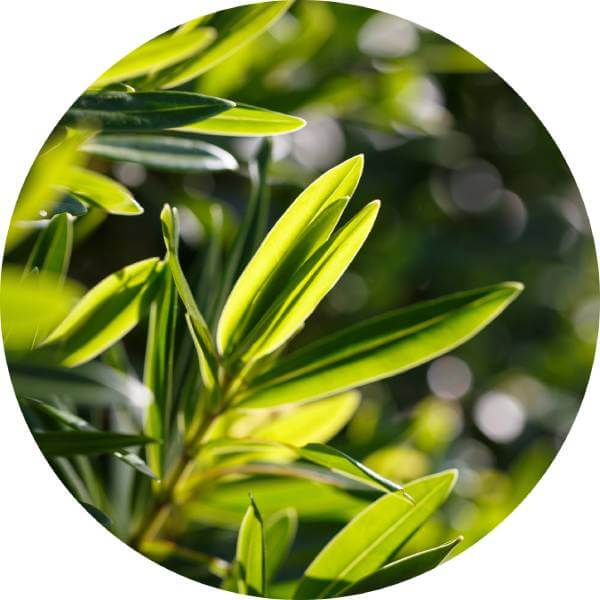Tea Tree
(Melaleuca alternifolia)
One day, the beautiful Princess Eelemani had to set off and leave behind her sweetheart, her Bundjalung people and the wild coasts of Eastern Australia. The journey was long and arduous, through unknown lands, and Eelemani was worried that she would not be able to find her way back home. That is why she pleaded with the God of the Earth and Planets for help; the god sowed seeds in the fertile land along the entire path that the princess had travelled and plants with succulent leaves sprouted from them.
The plant called melaleuca enabled the princess to find her way back home, but also helped her people to overcome many diseases centuries later. They used to extract oil from the succulent leaves and used it to dress wounds, inhale its beneficial vapour to treat coughs and colds and soothe insect bites. The place where this plant grows in abundance is still called Bungawalbin in the Aboriginal language, which means “the place of healing”. When Captain Cook arrived in Australia he observed the locals prepare a therapeutic malaleuca infusion and called the plant tea tree.
Thereafter Malaleuca alternifolia proved its therapeutic qualities in different European laboratories: scientists came to the conclusion that it is capable of killing viruses, bacteria and fungus. Tea tree oil has become an inevitable item used in many households not only in Australia, but throughout the world; Australian soldiers used to carry it on them in the Second World War. When the use of antibiotics became widespread in the mid-20th century, this plant fell into oblivion. However, something natural and so beneficial cannot sit in the shadow for a long time.

